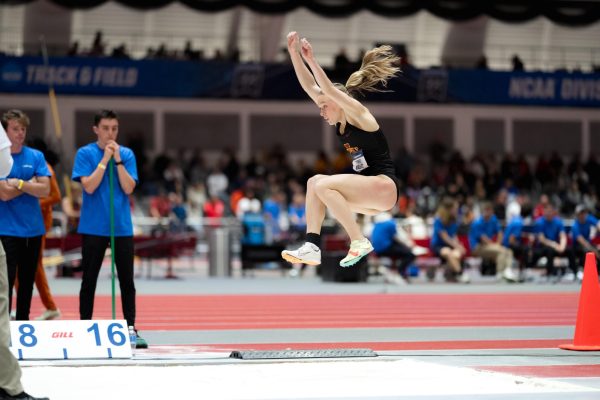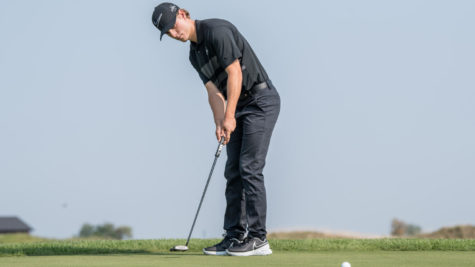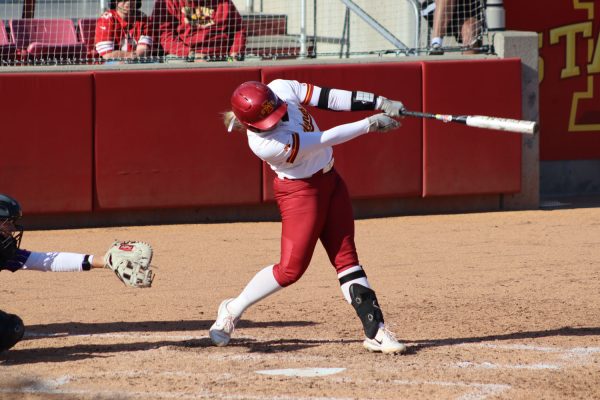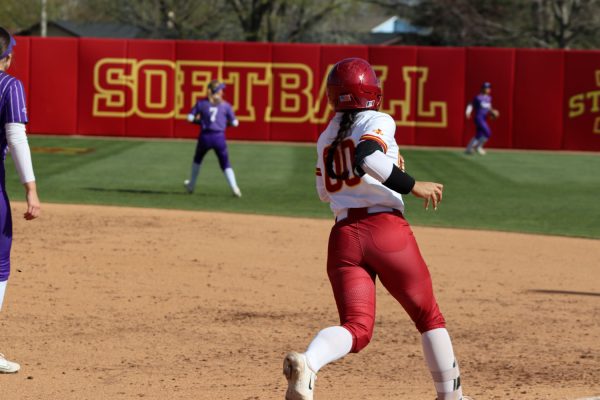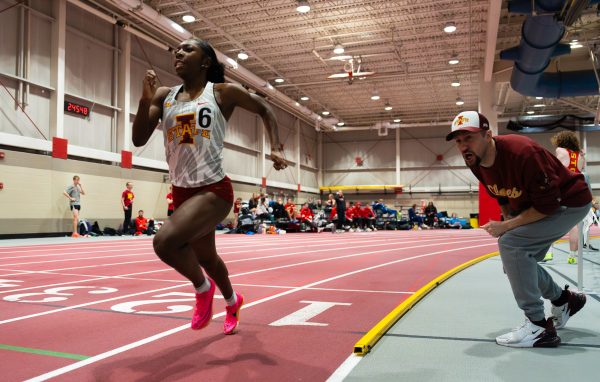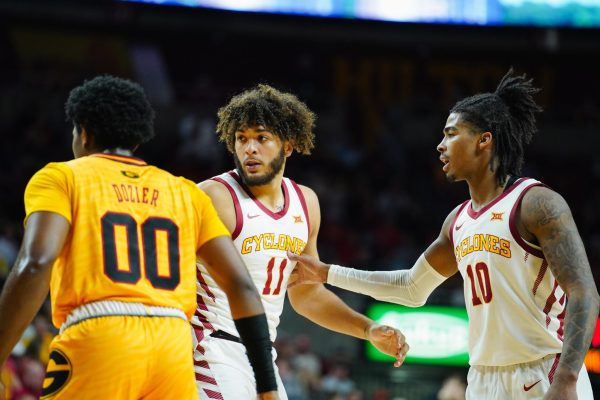Young defensive ends utilize spring practice
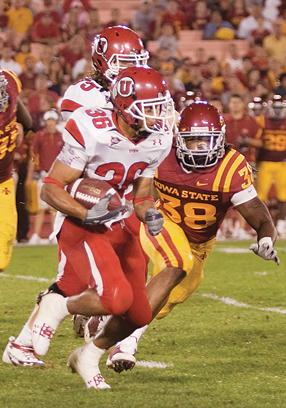
Photo: Manfred Brugger/Iowa State Daily
ISU defensive end Roosevelt Maggitt closes in on Utah’s Eddie Wide on Oct. 9 at Jack Trice Stadium. Maggitt will see more time on the field after an injury to starter Rashawn Parker. Manfred Brugger/Iowa State Daily
March 25, 2012
As a true freshman, David Irving had his number called to play in the rotation at defensive end.
Going into this spring season, Irving is preparing to be the starter at left end with high expectations resting on his broad shoulders.
“Last season coming in, I really didn’t know anything,” Irving said. “Going through the first season, I got a little bit experience. Now, I’ve still got a lot to work on, but I have a better idea of everything than I did coming in last year.”
ISU defensive ends coach Curtis Bray lauded Irving’s potential, but was still honest about his development thus far.
“The sky’s the limit with [Irving],” Bray said. “He’s still pretty raw, but he’s starting to make plays and starting to click a little bit.”
After tearing his ACL in the second quarter of the Cyclones’ 20-19 victory against Northern Iowa last September, Roosevelt Maggitt is hungry to get back on the field and retain his starting spot at right end opposite of Irving.
Bray said Maggitt, a senior, brings the invaluable skill of communication to the younger ends, which will be most conducive to their development.
“That’s the biggest thing the younger guys don’t want to do is talk to each other when they come off the field,” Bray said. “So Rosie’s communicating, he understands the blocks and that’s probably the biggest thing.”
For Irving, having Maggitt’s communication skills is imperative to prevent them from being content with their play.
“He’s been there before, so he coaches us up on everything that we need to be coached up on,” Irving said of Maggitt. “Sometimes we’ll come off [the field] and we’ll forget one thing and we think we did good, he’ll point it out so that next play we can remember to do that and improve ourselves.”
Another young talent who has made his way up the depth chart is Devin Lemke, who sits under Irving at the No. 2 spot at left end.
The 6-foot-4-inch, 225-pound redshirt freshman’s key objective, he said, is to get bigger.
“Speed-wise, I can pretty much get around and finish pretty good,” Lemke said. “I just need to work on the strength, but I’m getting up there.”
While Lemke’s strength and size may not be where he wants it to be at the moment, Bray said he brings more speed at the position than the team has had previously.
“He’s real athletic,” Bray said. “But he’s got to get stronger. Devin Lemke is a good player, he’s got good athletic ability.”
Bray said other young talents at defensive end include Cory Morrissey, an Ames native who transferred to Iowa State after a season at Iowa Western Community College.
“It helped [my development] lot,” Morrissey said of playing at Iowa Western. “We had great coaches there who really coached me up really fast to become a defensive lineman. With that experience, it really helped the transition and I got it going faster than I probably would have if I didn’t.”
Keeping true to the theme of speed, Morrissey said on National Signing Day that he wants to stay lean so he can stay fast, hoping to keep his weight around 240 to 250 pounds. Morrissey is currently listed at 242 pounds.
As for Irving, he knows what it is like to play without the desired strength level and will soon know what it is like to play with it.
“Last year, my strength levels were way lower than they are now,” Irving said. “Sometimes I would do the right steps and it didn’t really matter too much. So this year I got a little bit more strength along with the technique.”







